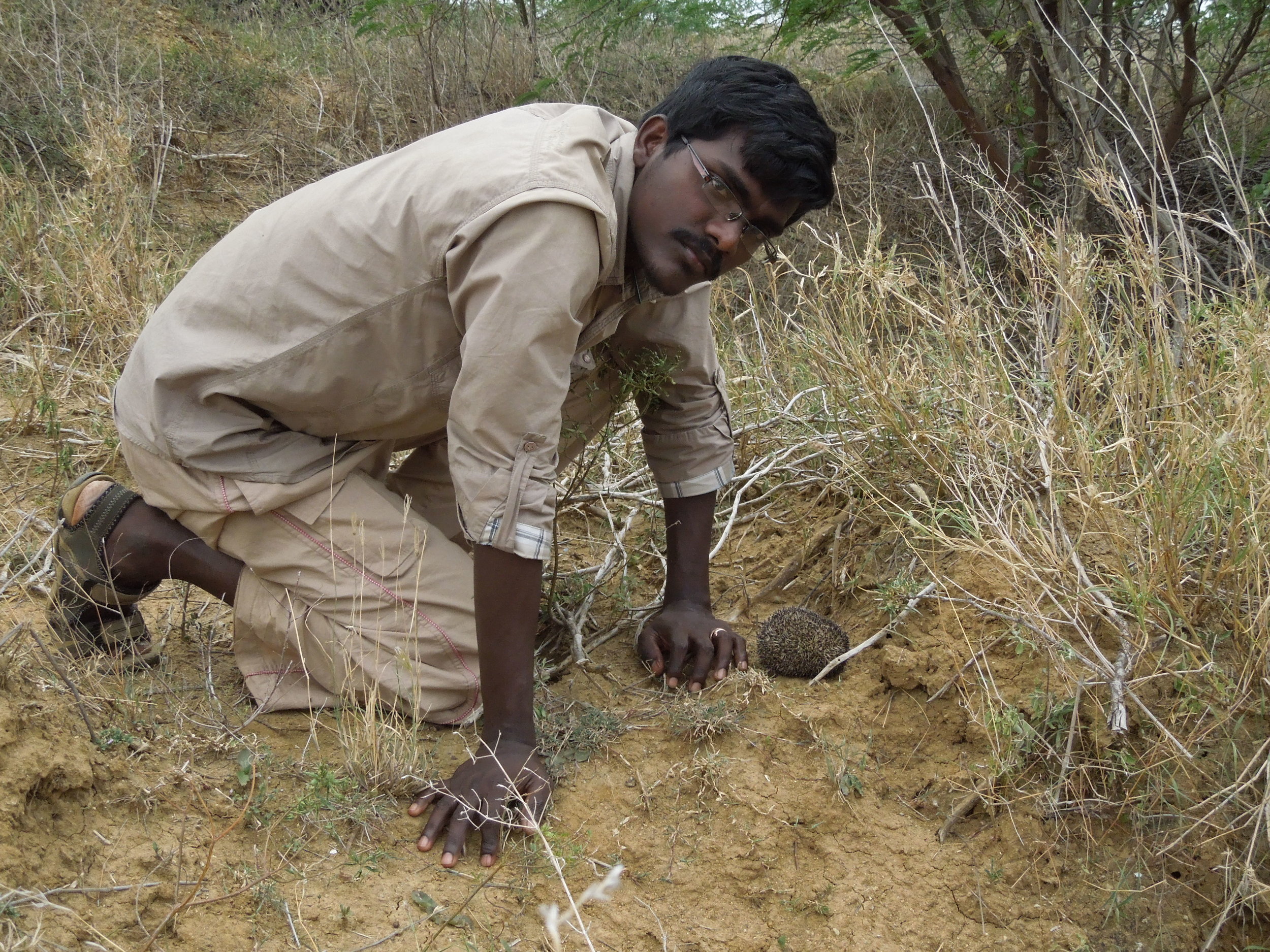Grantee Update: Brawin Kumar
Brawin Kumar is a recipient of the Small Projects Grant under the Ravi Sankaran Inlaks Research Fellowship (2016). The topic of his research is to understand the distribution, ecology and initiate conservation outreach for the endemic Paraechinus nudiventris (bare bellied hedgehog) in rural landscapes of South Tamil Nadu.
Hedgehogs in my backyard…
I first saw this cute animal ambling along, trying to recognize its surroundings or looking for food on a mound in a scrub jungle in Nagercoil in Tamil Nadu. This encounter stirred in me the same emotions, as I would feel on seeing a crawling baby. I noticed that whenever the animal was curled into a ball it would take a long time to unfurl but when it did unfurl it would stand absolutely still for a few seconds trying to sense its surroundings and then move slowly. The sharp spines when handled can give you quite a prick!
Hedgehogs are small terrestrial, insectivorous mammals. They live in burrows and camouflage very effectively with their surroundings. Many species are found in arid and semi-arid environments. However, little is known about their ecology and behavior in these xeric environments. There are three species of hedgehogs in India, long eared hedgehog, Indian hedgehog and South Indian hedgehog or Madras hedgehog.
The aim of the research was to plot the distribution and threats faced by Madras hedgehogs. Carried out over several weeks, our surveys confirmed the presence of a small and vulnerable hedgehog population in Southern Districts of Tamil Nadu. The first phase of our fieldwork took place in two talukas Tirunelveli and three talukas in Tuticurin districts. Our investigation showed 12 active hedgehog burrows in the semi arid landscapes of Tirunelveli district, making our search for a hedgehog within our study areas not so difficult.
To gain an understanding of the hedgehog we visited the Bombay Natural History Society (BNHS) collection department and analyzed the skins and skulls of hedgehogs, images of which enabled us to carry out thorough on-site surveys in the dry lands of Radhapurum. We found that they have adapted to life in a very dry, hot climatic condition. Although they were primarily found living in arid landscapes, our research also showed them inhabiting bushes near houses within the districts, Prosopis juliflora dominated shrub lands, near dried water tanks and ponds, edges of groundnut fields, hedges, streets (road kills) within the boundary of dry arid areas. Our surveys also found a hedgehog in cattle grazing fields (camera trap) in the backyard of houses and under palmyra tree leaves.
Discussions with the locals did not prove to be very helpful. However, they shed interesting insights into the superstitions that they associated with hedgehogs. Hedgehog skin is considered a good omen and the spines are believed to be a cure for whooping cough thereby making it a widely hunted animal and a victim of local trade.
We are currently in the next phase of the project to find more details of their distribution in the study areas. We will soon initiate the conservation outreach programs in both the districts by means of booklets and pamphlets. The conservation of the lesser-known hedgehog is of the utmost need before that. And to get primary information about the distribution and ecology is also very important. This project is a first kind of to bring the scientific data to know about the species.
By undertaking this project we have learned a lot about the hedgehogs, but there is so much we still don’t know. What is sure however, is that the hedgehog population is a very small, isolated and incredibly vulnerable one. We hope to gain more insights during the second phase of our survey.






